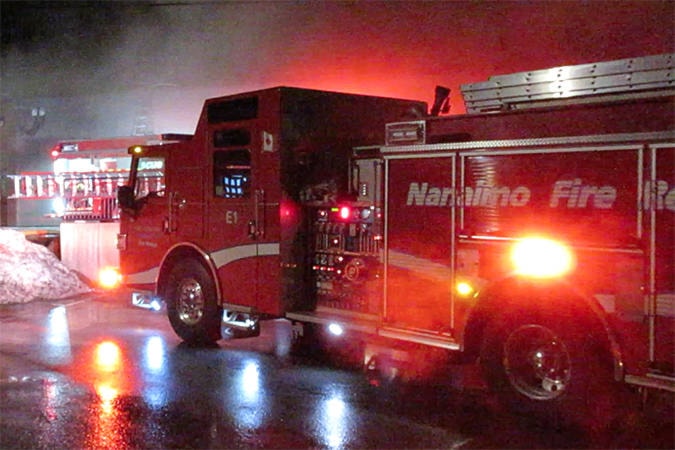Fire engines in Nanaimo are sounding the sirens more than ever before.
Nanaimo Fire Rescue reported a significant increase in callouts in 2017 – 9,665 total incidents, up more than 10 per cent from the year before.
Fire chief Karen Fry presented the statistics as part of an annual report to city councillors at Monday’s committee of the whole meeting at the Vancouver Island Conference Centre.
She said over the past five years, the City of Nanaimo’s population has risen seven per cent, but fire calls have increased 38 per cent.
“Continually our calls for service are increasing at a higher rate than the population, and as council remembers, we saw this same kind of report from the police a few weeks ago, as well,” Fry said.
She projects that Nanaimo Fire Rescue will answer 10,000 calls in 2018. Firefighters, as first responders, answer more medical aid calls than anything else. Fry reported that 68.5 per cent of callouts in 2017 were for medical aid. Motor vehicle accidents were second on the list at 6.1 per cent of calls. Only two per cent of callouts were for structure fires.
RELATED: Fire is catching, but firefighters have us covered
“Many of our structure fires and [other] fires are lower in call volume, but … they are higher risk,” Fry said. “Low probability and higher risk for damage.”
Three people died in fires in 2017 – all from the same family, in an incident on Nicol Street in October – and 17 people were injured in fires.
Overdose response is a big part of the job – Nanaimo Fire Rescue firefighters counted 461 calls where they found overdose patients and Fry said overdose calls have increased 282 per cent since 2013. Naloxone needed to be administered 40 times in 2017. The fire chief added that during January and February of 2018, there’s been a 3.5 per cent increase in overdose calls compared to the same period last year.
“I know sometimes in the province they’re talking about it stabilizing. We’re not seeing that here,” she said. “And if the same trend continues, we will be responding to over 550 overdoses in the city this year.”
The bulk of the overdose calls, or 72 per cent, came in the service area of fire hall No. 1 on Fitzwilliam Street, Fry said.
She talked about some of the fire department’s other initiatives, including programs to verify working smoke alarms and teach bystander CPR, and noted that firefighters completed 16,000 hours of training over the course of the year.
She said Nanaimo Fire Rescue is meeting its six-minute response time target 77 per cent of the time in its service areas. Notably, in 2017 there were more slightly response calls in an area of Hammond Bay outside the fire hall No. 3 (Hammond Bay Road) service area than there were in the fire hall No. 4 (Chase River) service area. Fry suggested the reason was medical aid calls with an aging population in that part of the city.
At Monday’s meeting, city councillors asked about response times, the increase in mental health callouts, and the stress of the job.
“We are trying to provide our staff with the education and resources available for identifying the occupational stress, injuries, and building resiliency around that,” Fry said.
editor@nanaimobulletin.com
Like us on Facebook and follow us on Twitter
